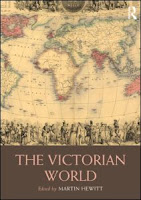By Rae Greiner
Indiana University
Baltimore: Johns Hopkins University Press, 2012
This book proposes a new model for understanding the
“sympathetic realism” of the nineteenth-century realists. Sympathetic Realism reads fictional works by novelists such as Jane
Austen, Charles Dickens, George Eliot, Joseph Conrad, and Henry James, as well
as philosophical and historical writings by authors such as Jeremy Bentham, in
order to demonstrate the ways in which the protocols of sympathetic imagining,
developed (especially) by Adam Smith in The
Theory of Moral Sentiments (1759), are at work in the forms, rather than
simply in the contents, of these works. Such a sympathy does more than foster
emotional identification with others. It provides a way of thinking “along
with” them. By abstracting feeling away from its origins, by turning feelings
into figures of speech, sympathy enables much more than emotional sharing, for
it need not involve feeling at all. Sympathy’s most important contribution is
not one-to-one emotional matching but instead a more mundane, more ordinary
sense of comfortable, proximate agreement with others, a shared mentality or
state of mind. Thus its most profound effect: sympathy produces realism. It is the cognitive process enabling us to
experience a world held in common with others, to feel confident that our
perceptions are theirs.
Sympathetic Realism
revises standard accounts of sympathy and realism. It considers sympathy as a way
of thinking, an imaginative operation. Sympathy is neither an emotion in its
own right nor an activity in which feeling necessarily results, but is instead
the imaginative process through which the real is substantiated. Neither sympathy nor the sympathetic realism
of the novelists and writers in question stakes a claim on transparency. The sympathetic
realism operating in their works functions as a means of provisional
understanding, aware that we neither have nor should desire unencumbered access
to other minds. Critics who describe realism as a “habit of mind,” and who
define nineteenth-century literary realism in particular as an historicizing
mode, thus describe what sympathetic realism feels like for readers and for
(some) characters alike: as a way of inhabiting the mindsets out of which arise
a sense of historical reality, a collective confidence in shared human
sentiments and beliefs.
Buy on Amazon.


















